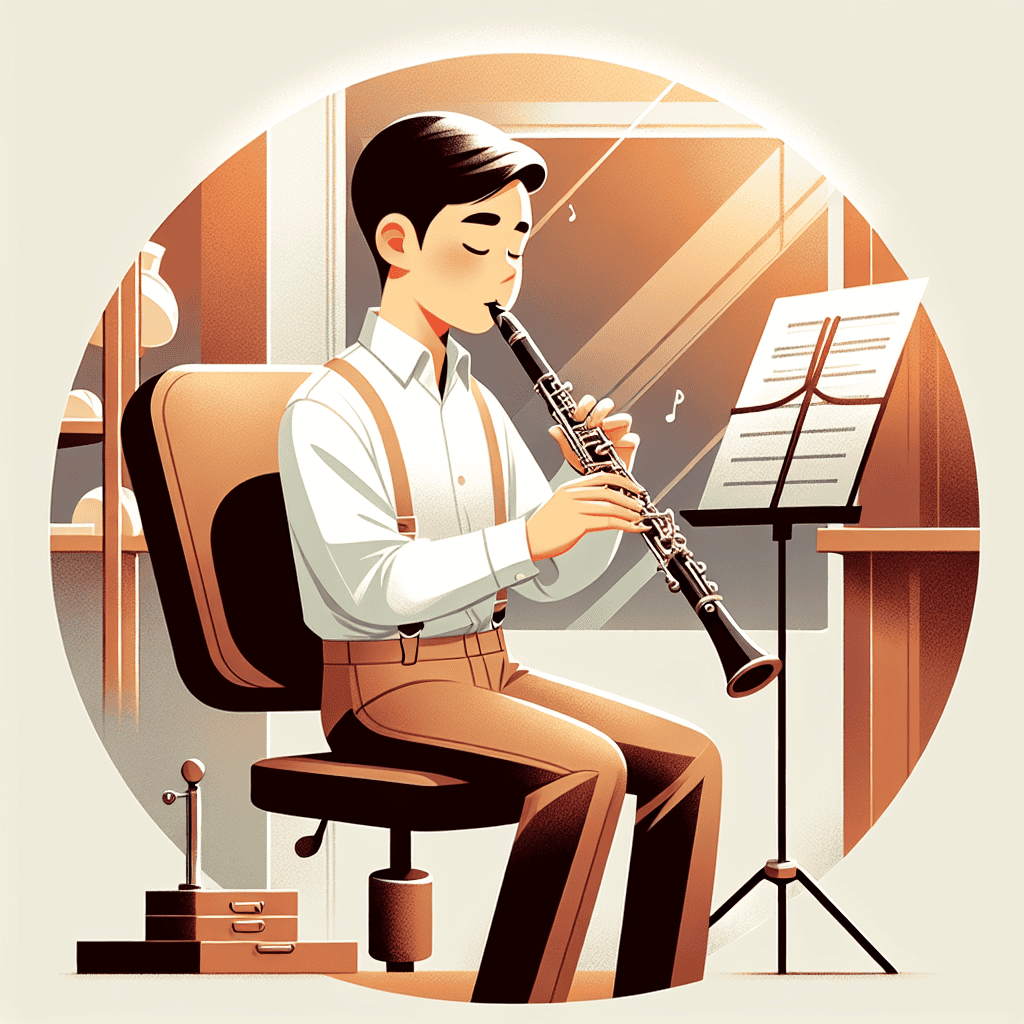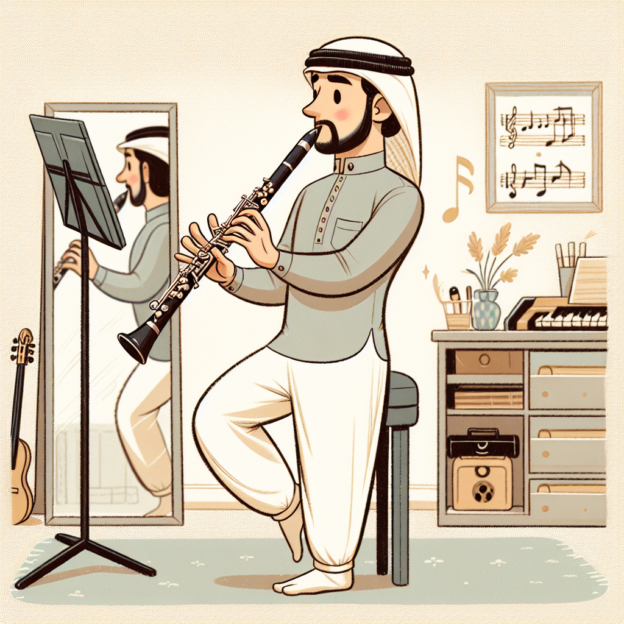Playing the clarinet is more than just blowing into a tube; it's about creating an enchanting sound that can captivate audiences. But did you know that your posture while playing can hugely affect your sound production and comfort? That's right! Proper clarinet posture isn't just about looking good – it's about playing better!
Holding Your Clarinet
Let's talk about how to hold your clarinet. Just like lacing up a good pair of shoes can set you up for a great run, holding your clarinet properly can lay the groundwork for fantastic music. The first step is to stand or sit tall, making sure your back is straight and your shoulders are relaxed but not slouched. Imagine there's a string pulling you gently upward from the crown of your head. This position helps with airflow, making it easier to produce a clear, resonant tone.
Hand Placement
Now, once you have that upright posture locked in, it's time to consider your hands. Your left thumb should gently support the back of the clarinet, while your other fingers should hover just above the keys. It's kind of like balancing a delicious slice of cake on your hands – you want to feel it's there, but you don't want to squish it down! This brings us to the importance of hand placement. It's really all about being comfortable yet still capable of quick movements to hit those tricky notes.
| Body Part | Correct Position |
|---|---|
| Back | Straight, not slouched |
| Shoulders | Relaxed |
| Left Thumb | Gently supporting the back of the clarinet |
| Other Fingers | Hovering just above the keys |
Legs and Feet
Next, don't forget that your legs and feet play a role too. If you're sitting, plant your feet flat on the ground. It's as if you're rooting yourself like a tree, giving you stability. If you're standing, shift your weight slightly onto the balls of your feet – this way, you maintain a flexible stance that can help when you need to shift your body while playing.
Breathing Technique
Let's talk about breathing. It's the lifeline of any wind instrument. If you're scrunched up, you can't take a big breath! So, remember to keep your abdomen open. Breathing deeply not only helps with airflow but also delivers a more robust sound quality. Think about your favorite piece of music – can you hear how the musicians breathe? It's all about flow!
Importance of Posture
So, why is all this talk about posture so important? Because it not only helps you play better, but it also prevents injury. Many clarinetists overlook the potential for repetitive strain when they spend hours practicing without paying attention to how they hold their instrument. A good posture routine minimizes those aches and allows for a more enjoyable practice session.
Martin Freres Approach
Now, let's add a bit of classic Martin Freres wisdom here! This renowned brand has become synonymous with musicianship, not just because of their superb instruments but also because of how they embrace the whole player experience. They support a complete approach to playing – one that includes your body's alignment and comfort just as much as it does the quality of the reeds or ligatures you use.
Seeking Feedback
If you're unsure about your posture, it's worth asking a friend or teacher to check it out. Sometimes a fresh pair of eyes can spot things you might miss. Ask for some friendly advice – trust me, your playing will thank you!
Practice Tips
Lastly, let's chat about practice. Why not focus on posture during your practice sessions? Set a mirror up in your practice space. As you play, sneak a peek at your form. Are you holding the clarinet loosely but firmly? Is your back straight? Are you breathing comfortably? A little self-awareness goes a long way!
Conclusion
Remember, clarinet playing is an art. With the perfect blend of posture, technique, and creativity, you can truly make magic happen every time you lift your clarinet, whether it's a solo, a duet, or part of a grand orchestra. So chin up, shoulders back, and let those beautiful notes fly!
So there you have it, folks! Mastering the art of clarinet posture isn't rocket science, but it requires a bit of practice and awareness. As you incorporate these tips into your playing routine, you'll notice how much more effortless and enjoyable your clarinet practice becomes! Keep striving for greatness and let that Martin Freres clarinet be your guide!







